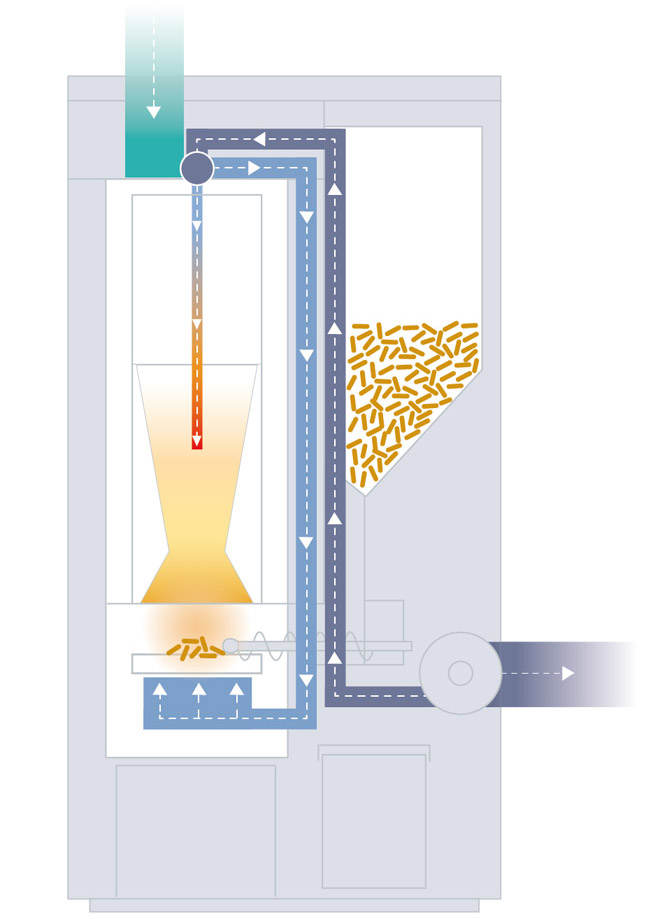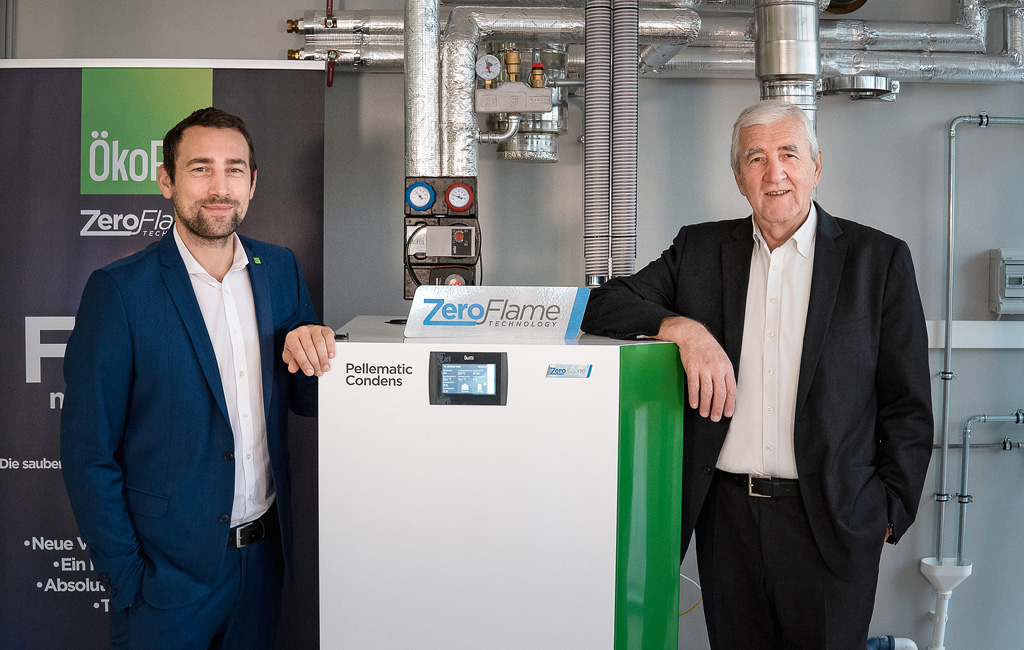Pioneering spirit is at the core of ÖkoFEN, a family-run company in Austria. In 1997, Herbert Ortner, the founder of the company, launched to market the first type-approved pellet heating system in the world. Pellet condensing technology then followed, which cools the hot exhaust gas, re-uses the energy, and also reduces emissions. Today, the current product, the Pellematic Condens, is 15 percent more efficient than its predecessor and has an unprecedented efficiency level of 98.7 percent.
So what drives ÖkoFEN? Their commitment to not rest on their laurels at such a high level, but to keep advancing in order to draw out the last quantum of efficiency and cleanliness from their pellet heating systems. Zero emissions here we come!
Over the years we have reduced the emissions from our products more and more.
Stefan Ortner, CEO of ÖkoFEN
“We are working for the energy revolution,” says Stefan Ortner, CEO of ÖkoFEN. “Over the years we have reduced the emissions from our products more and more. With our new technology ZeroFlame, we have even managed to get to the point where they can only be verified using high-tech measuring instruments in a lab.” ÖkoFEN is addressing the hotly debated topic of particle and dust emissions with ZeroFlame, as ever-decreasing emissions values are required for air pollution control.
The Pellematic Condens together with the additional ZeroFlame option has an annual average dust emission value of just two mg/m3 (based on 13 percent oxygen). Comparing this with other sources of fine dust shows that per year it only creates a tenth of what is caused by the tire wear on an average car alone. The aim of zero emissions is therefore within reach.
Re-inventing fire
But how does it work? ZeroFlame gets to work directly in the combustion process. This means that the process does not produce the components that expensive particulate filters have to filter out again at a later point. It is — as the name implies — flameless, and therefore emissions free. The resulting heat alone is sufficient to burn the pellets. The highlight is a new, x-shaped flue design and the divided recirculation of the exhaust air.
“We feed part of the exhaust air back to the supply air from below,” explains Stefan Ortner. “We inject another part from above directly into the high-temperature zone of our combustion chamber.” Getting the ratio of the air fed from below and above right is crucial to ensuring that there is no chance for a flame to develop. What was needed for this was a blower that controls the applicable draft conditions with precision.

ZeroFlame is innovative because of the special flue design, as well as the divided recirculation of the exhaust air from the combustion process. This exhaust air is fed into the primary air and injected into the high-temperature burnout zone. As a result, you have minimal emissions thanks to the specially developed air flow — without the need for any filters. (Graphic | ÖkoFEN)
Efficiency meets efficiency
“The topic of efficiency has always been key for us. It is why we have been working together with ebm-papst for decades,” explains Stefan Ortner, illustrating the collaborative relationship. “The company’s highly efficient components have a positive impact on the current consumption of our devices. It means everything comes together perfectly.” Technology from ebm-papst can therefore be found in every Pellematic Condens, for example, in the form of the gear motor which drives the conveying screw in the pellet burner.
The induced draft fan as a special development
When it came to the ZeroFlame technology, ÖkoFEN and ebm-papst together opted for an additional special development: an EC induced draft fan with special software. This fan can be controlled taking into account the applicable draft conditions, in line with the air flow requirements, and it can also draw the residual combustion exhaust gases to the outside.
“EC technology is ideal for this as it is extremely efficient and easy to control. This starts from just ten percent output,” explains Project Coordinator Thorsten Hartl, from ebm-papst Motoren & Ventilatoren GmbH in Austria, and adds: “It also runs really quietly.” This is important because the flue of the pellet boiler is routed inside the building. The flow conditions in the induced-draft housing therefore have to be perfect so that the air inside travels quietly. The impeller and scroll housing underwent the appropriate noise optimization measures to achieve this.
EC technology is ideal for this product as it is extremely efficient and easy to control.
Thorsten Hartl, from ebm-papst Motoren & Ventilatoren GmbH in Austria
Added to this are the higher requirements placed on the components by condensing technology. The cooled exhaust air condenses on the cooler surfaces, which can cause deposits to form. Ensuring that the design is right is essential to help counteract this, especially when it comes to the fan impeller. “In this case, however, the element that was the most specific was the position of the motor,” says Hartl. “If it is placed directly in the air flow, it is put at risk by sulfurous gases and high temperatures. This is why the motor is attached with a shaft outside the air flow.”
Stefan Ortner emphasizes how important working together with ebm-papst was: “For our pioneering work, it is absolutely crucial that we have a partner who is brave enough to develop things with us that no one else has done before. When my son is 30, he will come to experience the consequences of climate change. I want to be able to say to him that we did everything humanly possible to protect the environment.” We are looking forward to the next pioneering steps.

Leave a comment